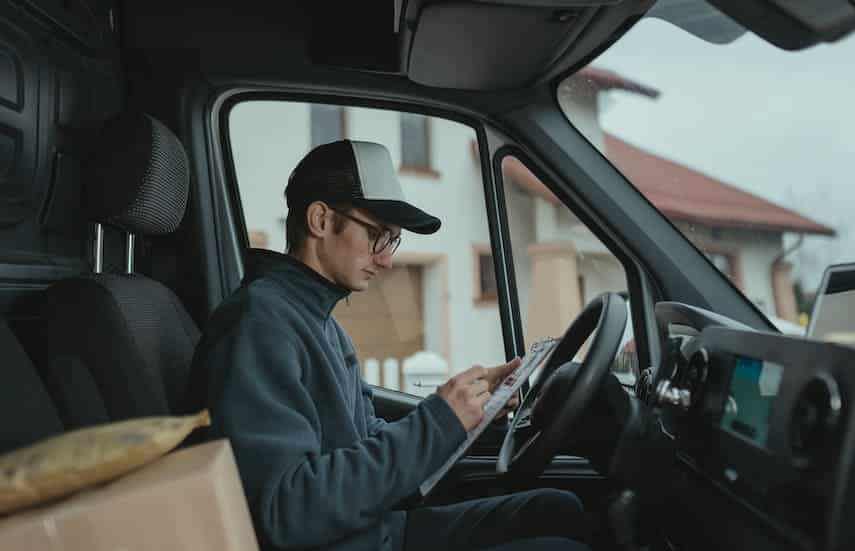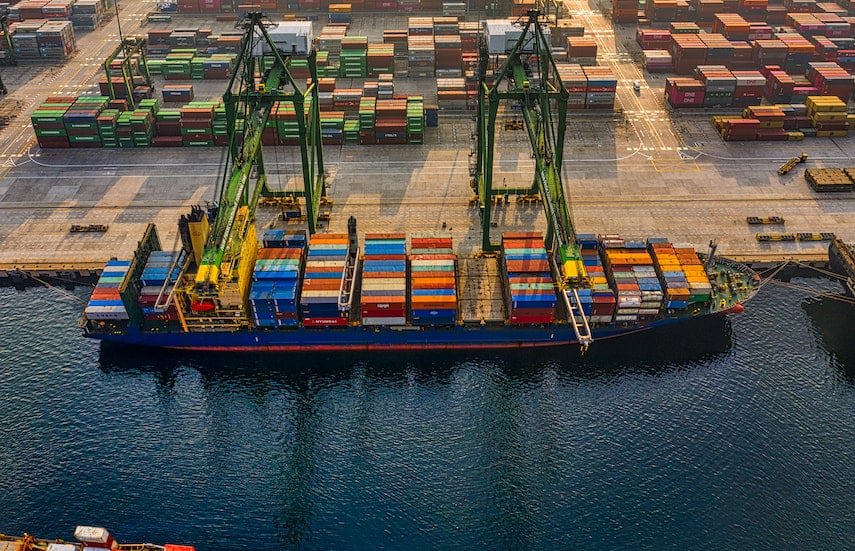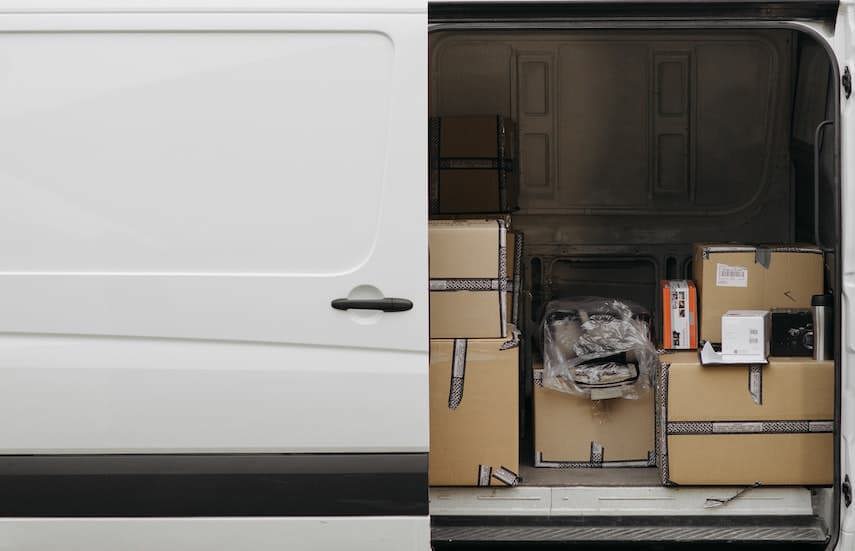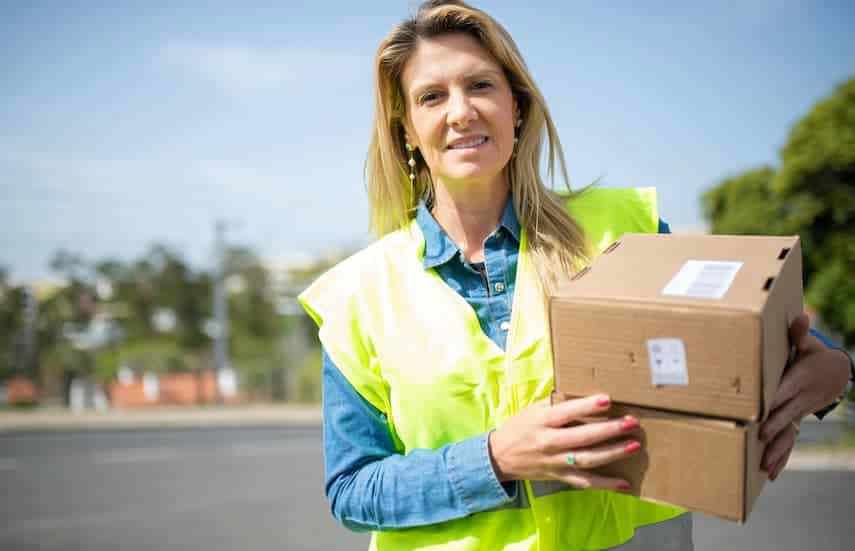
For wholesalers and manufacturers, the sheer size of customer orders can make B2B fulfillment a serious challenge: Product volumes directly impact storage and management costs, and increase the damage done whenever mistakes are made.
In this guide, we break down exactly what B2B fulfillment is, how it works, and the various fulfillment options available for modern B2B businesses.
- Outsmart your competition: Check out the Unleashed 2023 Supply Chain Management Guide.
What is B2B fulfillment?
B2B fulfillment, also called business-to-business fulfillment, is when one business supplies inventory to another business or retailer, either to use within the business or for resale to their customers. Unlike B2C (business-to-consumer) order fulfillment, B2B fulfillment often deals with bulk orders.
 B2B fulfillment presents unique challenges and benefits not found in standard B2C fulfillment processes.
B2B fulfillment presents unique challenges and benefits not found in standard B2C fulfillment processes.
Key differences between B2B and B2C fulfillment
The core difference between B2B and B2C fulfillment is size.
B2B fulfillment chiefly consists of large-scale, bulk orders, whereas B2C fulfillment generally consists of lighter deliveries and smaller order quantities.
Here are some more differences between B2B and B2C fulfillment:
- B2B orders cost more to ship, can take longer to reach their destination, and may require specialized handling equipment for loading onto dedicated freight transporters. Conversely, B2C order fulfillment offers rapid, low-cost, and often free, shipping.
- B2B procurement contracts can last for prolonged periods and be worth millions of dollars. B2C may result in a one-time only purchase by a customer compared to long-standing orders for B2B fulfillment.
- B2B fulfillment offers product pricing based on the needs and requirements of the purchasing business. In contrast, B2C transactions are made using standard prices that are the same for everyone.
- B2B payment plans generally involve the procurement of goods on credit, while B2C payments are paid when an order is placed or on delivery when the goods are received.
How the B2B fulfillment process works
B2B orders are for commercial use and often entail bulk quantities with significant financial implications. Fulfilling these high-stake orders often requires longer lead times, considerable planning, and detailed documentation.
While there are often strict compliance and quality processes, B2B fulfillment aims to provide fast, accurate and reliable delivery of goods from one business to another.
The following steps detail the B2B fulfillment process from start to finish.
1. Inwards goods
The inwards goods process consists of receiving stock in the form of raw materials, parts, components, or finished goods.
These goods are delivered from a third party to the receiving company or manufacturer. The inwards inventory is then inspected, counted, and verified to ensure the correct items and amounts are received and are in good condition.
A transparent supply chain ensures each link in the chain has appropriate access to information on the origin and status of goods. This includes dates and times inventory will be delivered.
SKUs or barcodes are used in the receiving process for optimal inventory control through easy tracking, storage, and retrieval.
2. Inventory storage
Once goods are received, the items are inventoried and either immediately allocated for order fulfillment or dispersed for storage.
Inventory items are ideally only stored for as long as is necessary to organize the timely distribution of goods for existing sales. A quick turn-around is preferable to holding stock as in the long or short term for future B2B sales, as this reduces storage costs and frees up cash flow.
3. Order processing
B2B order processing is the management and tracking of orders placed by your B2B clients. This includes all the administration tasks and fulfillment processes involved in getting products out the door.
Order management software helps improve order processing by stipulating product picking and packing activities for each customer order.
Unleashed order management software can be easily integrated with your B2B clients to automatically initiate order processing.
 Fulfilling B2B orders means more than just packing goods into a box; you must consider the entire supply chain process to ensure optimised logistics.
Fulfilling B2B orders means more than just packing goods into a box; you must consider the entire supply chain process to ensure optimised logistics.
4. Order picking
B2B fulfillment follows an order-wise picking strategy that allows partial order fulfillment.
Given the quantity and volume of B2B orders, processing parts of an order can increase efficiency and reduce lead times. Orders are processed and fulfilled as per manufacturing, warehouse, and shipping capacity with the remainder of the order fulfilled and dispatched when it is ready.
Items that need to be picked are listed on a document known as a picking slip or pick list.
The picking slip contains specific information, such as:
- Product identification numbers
- SKUs
- Product colors
- Product sizes
- Quantities of units
- Physical location of each product within the storage facility
Manual picking (employed pickers) or automated warehouse robots are used to select inventory items from the warehouse as determined by the picking slip.
5. Packing
Once all available items for an order are picked, the picker or picking system delivers them to the packing area for shipment.
Packing materials are selected to optimize the dimensional weight of each consignment for speed and ease of transport. Materials should be robust enough to ensure products reach their destination undamaged, yet light enough to minimise shipping costs.
Freight and shipping companies will also have specific packaging rules to optimize their own profits.
Orders are packed neatly into the appropriate box, bag, envelope, or other container and, in some cases, kept firmly in place with protective materials such as bubble wrap or newspaper.
Packing teams may include return shipping labels for easier tracking and faster processing should a customer decide to exchange or return an item.
6. Shipping
When an order has been packed and sealed, a courier label is attached to the outside and it is then dispatched to be shipped.
The order is shipped to the customer via one of the numerous carrier options. Carrier choice will depend on the freight type and customer location. It can include freight forwarding companies, airlines, transportation and courier services, or federal postal services.
Transport providers such as FedEx and UPS charge fees based on the actual package weight or the dimensional weight of the consignment: whichever is the greater of the two.
The formula used to calculate dimensional weight is:
Length × Height × Width / Dimensional Factor (DIM)
DIM equals the total volume of a package, as specified by the carrier, that is allowed per unit of weight.
7. Delivery
B2B delivery commonly uses a combination of transportation modes and more than one carrier.
Hybrid shipping methods provide better cost efficiency, more delivery options, and timely and reliable B2B fulfillment deliveries. For example, federal postal services deliver to remote areas that most other commercial carriers don’t.
This flexibility makes hybrid B2B distribution more practical than single-carrier options. In some cases, a hybrid method is necessary for last mile delivery to remote locations.
8. Returns processing
Processing customer returns is a core part of providing satisfactory customer service.
The returns process, also called reverse logistics, should be undertaken quickly and efficiently when a customer sends an item back for refund or exchange. It should involve quality control checks to ensure a product is in a suitable condition to be restocked. Faulty or damaged goods will need to be repaired (if appropriate), written off, or recycled.
Once the returned items are inspected and managed accordingly, the accounting team will process a refund or credit for the customer.
The process of reverse logistics is only one aspect of your returns management. Another important process is analysis of the nature of returns, particularly if the same products are being returned frequently or in large volumes.
The collection and analysis of returns data will help to identify the reasons for the returns, and inform which steps are required to remedy the problem.
 B2B fulfillment includes reverse logistics: The management and processing of returned goods.
B2B fulfillment includes reverse logistics: The management and processing of returned goods.
B2B fulfillment services
B2B fulfillment services manage the delivery of goods from business to business, transporting large, bulk shipments to the recipient company.
With the expectation that B2B fulfillment services are optimized to reduce cost and improve efficiency, these services follow multifaceted routing procedures and play a crucial role in a business’s ability to fulfill customer orders in a timely manner.
B2B 3PL vs. B2B 4PL services
Third-party logistics (3PL) is a service model where manufacturers maintain control of their supply chain and outsource transportation and logistics operations. Fourth-party logistics (4PL) services manage the entire supply chain.
Consider these four primary differences between a 3PL and a 4PL service:
1. Fulfillment
- 3PL focuses on order fulfillment that includes warehousing, picking, packing, and shipping orders.
- 4PL services manage your entire supply chain, including order fulfillment, transportation, automation, and technology.
2. Operations
- 3PL service operators use warehouse management systems in fulfillment center locations within their network.
- 4PLs act as strategic touchpoints streamlining supply chain activities to aid production, demand planning, inventory management, distribution, and all inward and outbound logistic activities.
3. Collaboration
- 3PL partners give you access to the same customer service team or a dedicated account manager. This enables you to work with a team that understands your business and ensures issues are resolved quickly.
- When using 4PL your communications are filtered through the 4PL provider to the different 3PLs. Without having ownership at the 3PL level this can potentially cause delays in dispute resolution.
4. Strategy
- 3PL focusses on daily logistics such as warehouse and transport operations and are better suited to small to medium sized businesses. 3PL service providers are also well placed to manage the time-consuming process of reverse logistics and recycling.
- 4PL focuses more on the holistic integration and strategic optimization of supply chain functions. Making them more suited to large-scale businesses and organizations.
 Third- and fourth-party logistics services can provide fulfillment for B2B companies unable to process customer orders fast enough to meet demand.
Third- and fourth-party logistics services can provide fulfillment for B2B companies unable to process customer orders fast enough to meet demand.
Pros and cons of outsourcing B2B fulfillment
A key factor in 3PL fulfillment is determining your internal fulfillment costs per order and comparing that to the outsourced cost per order.
To guarantee an accurate estimation, you need to know the benefits and risks of each.
Here are a few majors to consider.
The benefits of outsourcing B2B fulfillment:
- It frees up time and resources that can be redistributed across other areas of your business.
- Costs, such as rent and labor, are converted from fixed to variable cost per order.
- Outsourcing can absorb seasonal spikes in shipping and returns volume.
- All established fulfillment providers guarantee their work.
The risks of outsourcing B2B fulfillment:
- You’re dependent on the reliability and speed your B2B fulfillment service.
- Mistakes made by a fulfillment service can become costly.
- You’re reliant on your fulfillment service handling and packaging stock correctly.
- Fulfillment service workers processing returns are less involved with your product and may be more prone to picking errors.
There are also additional risks that come with global expansion.
International B2B fulfillment services can be affected by trade barriers such as taxes, subsidies, and shipping tariffs. These factors can be mitigated by implementing quality inventory management systems and efficient reporting software.
Other dynamics that can create challenges for large shipping companies include security situations, legal barriers, and even corrupt governments.
Features to look for in a reliable B2B fulfillment service
You’ll no doubt have a few must-haves in mind when shopping around for a reliable B2B fulfillment service. These are important to know, especially if they’re specific to your business needs.
Here are a few more key features of a reliable B2B fulfillment service:
- Advanced warehouse and B2B inventory management software to guarantee accurate and timely fulfillment.
- Technology should include an all-in-one dashboard that allows you to track the location of your inventory.
- Properly trained staff skilled in standard operating procedures to ensure minimal downtime and errors during order processing.
Most importantly, your B2B fulfillment service must have multiple shipping partners.
With on-time delivery being the crucial aspect of B2B fulfillment, any delays can lead to a considerable loss.
Therefore, your fulfillment service provider must have contingencies in place should one shipping partner be unable to deliver consignments on time.
 A great B2B fulfillment service provider is one that is willing to understand and accommodate your specific business needs.
A great B2B fulfillment service provider is one that is willing to understand and accommodate your specific business needs.
B2B fulfillment tools and software
B2B fulfillment tools and software are digital technologies that help your business to automate and manage inventory, order fulfillment and shipping.
Software tools can track your customer orders, inventory levels, and some also have the capability to automate your shipping processes.
Let’s quickly cover a few popular B2B fulfillment tools and software out there.
Warehousing tools
The acquisition and implementation of warehouse management tools helps to facilitate timely dispatch of orders.
These improve B2B fulfillment through the generation of smart pick-paths that speed up the picking process. The software displays essential product details or pictures on handheld devices for accurate picking and faster order fulfillment.
Inventory management software
Inventory management software optimizes every aspect of inventory control.
It helps to provide more accurate demand forecasting, offers transparent real-time inventory syncing capabilities and can manage reorder levels.
Inventory management tools also provide competitive value by reducing the need for safety stock and freeing up working capital. Inventory can be tracked throughout the supply chain, from purchasing right through to shipment.
Cloud-based solutions like Unleashed also integrate easily with other software systems. This flexibility allows companies to create a single source of truth and centralize all their sales data.
Accounting software
Accounting software is designed to simplify business tasks such as payables, receivables, and managing expense claims.
These tools provide manufacturers and wholesalers with an instant view of cash flows, transactions, and account details.
Online bill payments made through accounting software help you keep track of spending and stay on top of bills.
Good accounting tools will also seamlessly integrate with external systems, connect to bank accounts, and provide automated transaction feeds.
Analytics
Insight, agility, talent, and technology remain the four most important facets in next-generation sales growth.
A McKinsey global survey of 2,500 B2B companies observed that companies willing to switch up their sales models and embrace next-generation resources are growing revenue at double the rate of GDP.
Automation and digital B2B fulfillment tools help manufacturers and retailers improve their B2B fulfillment efficiency. They provide predictive data and analytics which can be used to maximise capabilities across all fulfillment processes and improve overall customer responsiveness.
